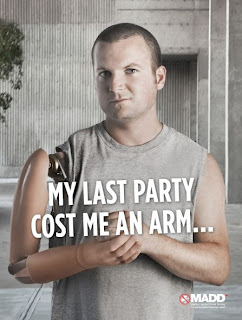This post will effectively clear any confusion regarding difference between strategy and tactics. The first concept to understand is that tactics is the various methods implemented in order to fully unleash the intended strategy.
Strategy is a plan or method by which you are going to achieve a specific goal in a contested government. It should have a strategic intent of gaining some kind of competitive advantage. It may be to inform and engage with the community, build reputation, and to achieve positive working relationships.
As mentioned, a strategy is usually (always) implemented in a contested space.What is a contested space?
It refers to the presence of competition. For example, in the case of Feiyue, its obvious competitors are probably Converse, Vans,
There are two dimensions of contested space depending on the approach it is viewed in.
1. Transmission (functionalist) model
This approach assumes that if awareness of an issue is raised, this will automatically lead to the desired behaviour. Hence awareness raised through media platforms that can reach the masses for example print posters, online, social networking sites, TV or radio. These ways are the tactics used in order to reach the objective of the strategy employed.
Print:
The above print poster, for example, is a campaign to raise the awareness of the dangers of drink driving. The strategy used here might be to deter drink drink driving by highlighting the consequences, resulting some sort of fear to reside in the publics. The tactic used is the placement of print posters.TV:
The tactic used is tv advertisements. the first being the endorsement of celebrities, while the second video is the use of animation and music.
2. Constructionist model
This approach opposes the transmission model as it states that communication involves not only the sender, but also the intended and unintended audiences, publics and communities who construct their own meaning from a range of outputs.The range of outputs refer to the tactics adopted.
The constructionist model is more inclined towards experiential marketing as it allows interaction with a focused audience, and thus personal interaction.
Digital Graffiti Wall for Converse
I personally LOVE this campaign because it simply looks fun to do! I feel that this campaign gives converse a fun and 'artsy' image which cause potential consumers to have this 'feel good' factor towards the brand.
Fei Yue Launch Party
This event invites artists and art fanatics in Singapore to a launch party that showcases reinventions of Fei Yue shoes by renowned local artists. Their focused group is small since the event is by invitation only, and not widely publicized by the media. The above video depicts the process of reinventions by the various artists.
Miss Tanya mentioned that the more focuses your target audience is, the better is the tactic in supporting the strategy. This is because it is better to impact and change the perspectives of a selected community than simple 'announce' to a big group of people and yet achieving nothing as behavior is not altered.
In conclusion, an integrated strategy and tactic would be the most effective in a PR campaign.
I've been talking a lot about Fei Yue in this post because of the need to research for the final PR plan. Stay tuned for more Fei Yue in the weeks to come!




Hey Joane,
ReplyDeleteNice videos and pictures as usual. Makes reading your blog entries much more enjoyable. And yes, I LOVE the Converse video too (it has always been one of my favourite brands).
Personally, I feel that experiential communications and marketing works best. After all, nothing beats experiencing something in real life. Of course, the downside to using this method is that if you have a lousy product/service, negative publicity via word-of-mouth will spread like wildfire.
Having said that, I have to admit that the fuctionalist or transmission method works better for some campaigns. I guess that the strategy to use is heavily dependent of what your campaign is all about.
If the campaign is to educate the public on the dangers of drink driving, it would be absolutely ridiculous the let them “EXPERIENCE” what it's like to get drunk and crash their Honda into a lamp post. In this case, the direct transmission approach through impactful videos and posters would work rather well.
But still, in my opinion, the experiential approach will work better for MOST campaigns as the impact is more long-lasting and the human touch – as well as a certain sense of sincerity – is there. These elements and more work well to create a positive impression in the minds of the consumer and the public. Dry television adverts, for example, only garner so much attention and for a short time span.
Do you agree?
- Syaz
Hey,
ReplyDeleteI like the experiential approach too as it makes everything more interesting. However, I feel that as long as the approach use makes the public remember what the campaign/product/service is about, it is a good approach. Ultimately, having a memorable campaign is the most important. An example would guerrilla advertising. People do not necessarily have to experience, they just have to remember.
As for your example of drink driving, I would say 'why not'? It will be cool to experience the few seconds before crashing into a lamppost, to instill some fear into people's hearts so that they will never drink drive ever. Wouldn't the campaign be interesting? :)